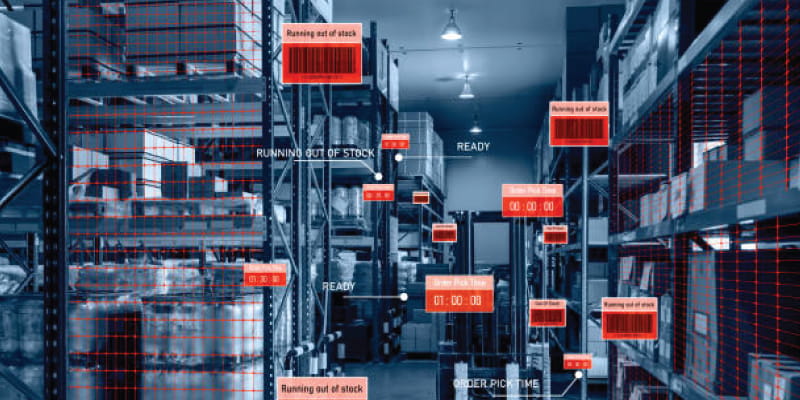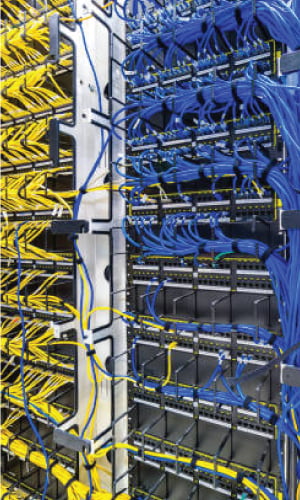Table of Contents
Introduction
Understanding the Importance of Maintain Your IT Hardware is crucial for ensuring optimal performance of IT systems. Neglecting hardware maintenance can lead to various issues, from decreased efficiency and reliability to potential data loss. However, by implementing proactive maintenance practices, businesses can reap the benefits of improved performance and longevity of their IT hardware. This guide will cover essential maintenance practices, such as regular cleaning and monitoring of hardware temperature and updating drivers and firmware. We will also explore selecting maintenance tools and software, implementing preventive maintenance schedules, and troubleshooting common hardware issues. We will discuss the role of professional maintenance services, data security during maintenance, and strategies for measuring and optimizing hardware performance. Lastly, we will highlight the importance of future-proofing hardware investments to adapt to evolving technological trends and ensure long-term sustainability. With these insights, businesses can effectively maintain their IT hardware to support their operations and stay ahead in the ever-changing digital landscape.
Understanding the Importance Maintain Your IT Hardware
hardware maintenance is the backbone of a well-functioning IT system. It’s like giving your car regular oil changes to keep it running smoothly. Neglecting hardware maintenance can lead to many issues, such as slow performance, system crashes, and even data loss. By understanding the importance of hardware maintenance, you’re taking proactive steps to ensure your IT infrastructure operates at its best. When hardware components are not properly maintained, they can become prone to wear and tear, affecting their performance. This can result in increased downtime for your systems and ultimately impact productivity. By staying on top of hardware maintenance, you’re effectively extending the lifespan of your IT equipment and reducing the likelihood of costly repairs or replacements down the road. Proactive hardware maintenance also plays a crucial role in security. Outdated firmware or unpatched software vulnerabilities can expose your systems to potential cyber threats. Regularly servicing and updating your hardware will mitigate these risks and protect sensitive data from potential breaches.
Essential Hardware Maintenance Practices
Maintaining your IT hardware is crucial for ensuring optimal performance. One of the most fundamental practices is regular cleaning and dusting of hardware components. You can prevent overheating and potential damage to sensitive parts by keeping your equipment free from dust and dirt.
Monitoring and managing hardware temperature is also essential. Overheating can lead to malfunctions or even permanent damage, so it’s important to keep an eye on the temperature levels of your devices. This can be done using monitoring software or physical tools to measure heat levels.
Lastly, remember to update hardware drivers and firmware. Manufacturers often release updates to improve performance, fix bugs, and enhance compatibility with other devices or software. Keeping your hardware up-to-date ensures it functions at its best and remains compatible with new technologies.
Choosing the Right Maintenance Tools and Software
When selecting maintenance tools for maintenance your IT hardware, it’s essential to consider a few critical criteria. You’ll want to look for user-friendly and reliable tools that offer comprehensive features for diagnosing and repairing issues. Ensuring your chosen tools are compatible with your specific hardware components is also crucial. Take the time to research different options and read reviews from other users to make an informed decision.
Several popular software solutions are available for hardware maintenance, each offering its own features and benefits. Some well-known options include remote monitoring and management (RMM) software, diagnostic tools, and performance optimization utilities. These programs can help you keep track of your hardware’s health, identify potential problems before they become major, and streamline routine maintenance tasks. Consider what aspects of maintenance are most important to you when evaluating different software options.
Compatibility is another critical factor when choosing maintenance tools and software for your IT hardware. Before making any purchases or downloads, double-check that the tools you’re interested in are fully compatible with your specific devices and operating systems. Using incompatible software can lead to more harm than good by causing conflicts or errors within your system. When in doubt, contact the tool’s support team or consult a professional technician.
Implementing Preventive Maintenance Schedules
Say goodbye to unexpected hardware issues with our exciting preventive maintenance schedules! By creating a comprehensive maintenance calendar, you can avoid potential problems and keep Maintenance your IT hardware in top-notch condition. Assigning responsibilities for maintenance tasks ensures that every aspect of your hardware is cared for, leaving no room for oversight or neglect.
Adapting maintenance schedules to fit your business needs has always been challenging! Our proactive approach allows you to tailor the maintenance tasks to your company’s requirements. Whether it’s adjusting the frequency of checks or customizing the scope of servicing, we’ve got you covered. Our flexible scheduling options make maintaining your IT hardware a seamless part of your overall business strategy.
With our preventive maintenance schedules in place, you can say hello to optimal performance and goodbye to downtime. Embrace the power of regular upkeep and watch as your IT infrastructure operates at its best. Keep outdated methods from holding back your hardware – take charge with our innovative approach to preventive maintenance!
Troubleshooting Common Hardware Issues
When troubleshooting common hardware issues, the key is first to identify and diagnose the problem. This can involve checking for error messages, running diagnostic tests, or observing any unusual behaviour from the Maintenance your IT hardware. By pinpointing the issue, you can then move on to resolving it effectively.
Resolving hardware performance issues often involves taking specific steps tailored to the nature of the problem. Whether updating drivers, cleaning out dust buildup, or replacing faulty components, knowing what actions to take can make all the difference in restoring optimal performance. It’s essential to address the symptoms and understand the underlying causes of hardware problems.
Fortunately, there are a variety of diagnostic tools available that can assist with troubleshooting common hardware issues. These tools can help pinpoint specific areas of concern and provide valuable insights into potential solutions. Whether it’s built-in system utilities or third-party software, leveraging these resources can streamline troubleshooting and lead to quicker resolution.
The Role of Professional Maintenance Services
Outsourcing hardware maintenance can bring a plethora of benefits to your organization. By relying on professional maintenance services, you can ensure that your IT hardware is always in top-notch condition, minimizing the risk of unexpected breakdowns and costly downtime. These experts have the knowledge and experience to identify potential issues before they escalate into significant problems, ultimately saving you time and money.
When selecting a reliable maintenance service provider, it’s essential to consider their track record and reputation in the industry. Look for companies with proven expertise in maintaining various IT hardware types and a solid customer satisfaction commitment. Additionally, review their service level agreements (SLAs) and response times to guarantee that they can meet your specific needs and requirements.
Choosing the proper maintenance contracts is crucial for ensuring the optimal performance of your IT hardware. Evaluate different contract options based on coverage scope, duration, cost-effectiveness, and flexibility. By carefully considering these aspects, you can tailor your maintenance contracts to perfectly align with your organization’s operational demands while maximizing the lifespan of your valuable hardware assets.
Ensuring Data Security during Maintenance
When maintaining your IT hardware, data security should be a top priority. Whether upgrading components or performing routine servicing, it’s crucial to implement best practices for safeguarding sensitive information. Following proper protocols and encryption tools can minimize the risk of data breaches or loss during maintenance.
One effective strategy is creating backup copies of critical data before initiating hardware servicing. This ensures that your essential files and documents are safely stored elsewhere even if something goes wrong during maintenance. Additionally, consider utilizing cloud storage solutions for added security – this allows you to access your data from anywhere while protecting it from potential risks associated with physical hardware maintenance.
Always double-check permissions and access controls before starting any maintenance procedures. Restricting unauthorized access to sensitive information can prevent accidental deletion or modification of critical data. You can maintain optimal performance without compromising security by staying vigilant and proactive in securing your data during hardware upkeep.
Measuring and Optimizing Hardware Performance
When measuring and optimizing hardware performance, focusing on key performance metrics is essential. Understanding factors such as processing speed, memory usage, and storage capacity can provide valuable insights into the efficiency of your hardware. By regularly monitoring these metrics, you can identify areas for improvement and make informed decisions about upgrades or optimizations.
Utilizing tools for benchmarking and analyzing hardware performance is another crucial aspect of maintaining optimal functionality. These tools enable you to compare your hardware’s performance against industry standards and identify potential bottlenecks or areas of weakness. Armed with this information, you can develop targeted strategies for enhancing overall efficiency and ensuring your hardware fully functions.
Enhancing hardware efficiency is a practical approach and an exciting challenge. Exploring innovative strategies, implementing new technologies, and fine-tuning existing systems all contribute to the exhilarating process of maximizing hardware performance. The satisfaction of achieving peak efficiency in your IT infrastructure is unparalleled – knowing that every component is operating at its best brings a sense of accomplishment that fuels ongoing maintenance efforts.
Conclusion
When it comes to future-proofing your hardware investments, the key is to stay ahead of the curve. By considering technological advancements and industry trends, you can ensure that your hardware remains relevant and practical for years to come. Adapting your hardware to evolving technological trends is crucial for staying competitive in today’s fast-paced world. This may involve planning regular upgrades or replacements to keep up with the latest innovations. By doing so, you can avoid the risk of falling behind and maximize the lifespan of your hardware investments.
FAQs
Why is it essential to maintain IT hardware?
Maintaining IT hardware is vital because it ensures optimal performance, extends the lifespan of the equipment, and reduces the risk of hardware failures and downtime.
What are some everyday maintenance tasks for IT hardware?
Some everyday maintenance tasks for IT hardware include regular cleaning to remove dust and debris, updating software and firmware, monitoring system performance, and performing routine backups.
How often should I clean my IT hardware?
The frequency of cleaning IT hardware depends on the environment and usage. However, cleaning the hardware at least once every three to six months is generally recommended to prevent dust buildup and maintain optimal performance.
What should I use to clean my IT hardware?
To clean IT hardware, use non-abrasive cleaning materials such as microfiber cloths, compressed air dusters, and isopropyl alcohol. Avoid using harsh chemicals or abrasive materials that can damage the equipment.
How can I optimize the performance of my IT hardware?
To optimize the performance of IT hardware, you can ensure that the latest software updates and patches are installed, regularly defragment the hard drive, optimize startup programs, manage system resources efficiently, and periodically monitor and resolve any performance issues.














